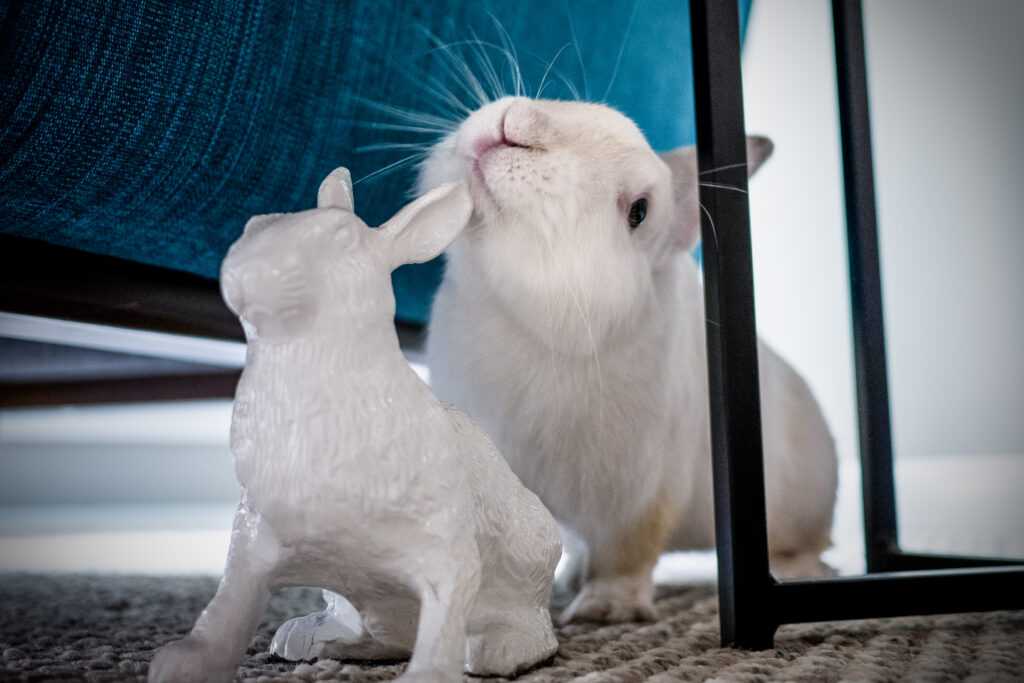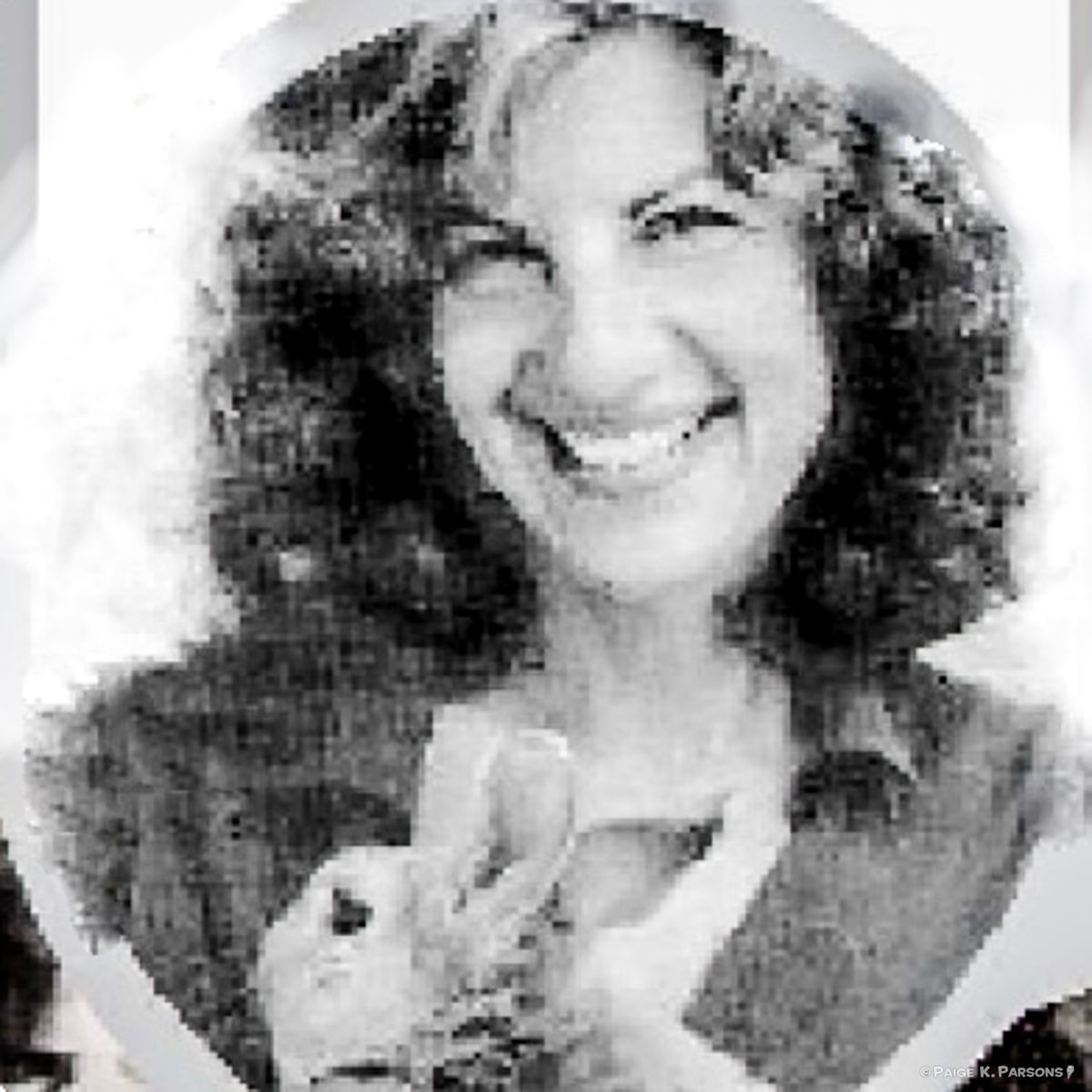Rabbits talk to each other and to humans using a wide variety of body positions and facial expressions, and a few vocalizations. Here is a basic vocabulary of rabbit language to help you start a conversation with your companion.
Ears forward. (TV antenna position)
“Something has caught my attention.”
Ears back.
- “I don’t like what you’re doing, or what I think you’re about to do.”
- “I’m giving my radar a rest. Wake me for supper.”
Ears-back position shows the importance of context and of reading the whole rabbit. If your rabbit puts her ears back, tail up, and growls and lunges when you try to pet her, the message is entirely different from that of a rabbit who is sitting in a favorite corner at midday, ears at rest, front legs tucked (sometimes called meat-loaf position), eyes at half-mast.
One ear back, one ear forward or to the side.
“Something is going on but it doesn’t yet merit my full attention.”
The nose-nudge.
- You reach for your rabbit and he thrusts his nose for-ward, chin flat on the ground: “Pet me. Now.”
- You’re standing around, minding your own business. Your rabbit hops up and nudges your shin with his nose: “You’re in my path. Make way, buddy.”
Tooth-grinding.
You and your rabbit are sitting together on the floor, listening to a ball game on the radio. you hear a strange noise and notice that she seems to be chewing something – like rocks, maybe, from the sound of it: “I’m very happy. If I were a cat I’d be purring.” (Not to be confused with the rarer tooth-chat-tering, which is a sign of pain.)
Nipping.
- “You’re my friend, and I groom all my friends very thoroughly.”
- “Quit trying to put that medicine in my eyes.”
- “I’m a macho male bunny. If you don’t have me neutered I’ll be running the show around here from now on.”
- “I’m in the mood for lust.”
Licking.
“I trust you.”
Lunging.
Her ears are back, her chin is thrust forward and up, her tail is up: “Back off.”
Circling.
As you attempt to walk across the room, your rabbit runs in circles around you: “Let’s play, Let’s court. I feel frisky.”
Dancing.
Your rabbit dashes half-way across the room and makes a 180-degree turn in midair: “Yippee!”
Flopping.
Your rabbit, who has been sitting quietly, or grooming herself, suddenly falls over on her side, exposing her belly. you think she’s having a heart attack: “I’m like totally relaxed. Life is wonderful, and so am I.”
Mounting.
Putting her front paws on a toy or another rabbit or your foot, your rabbit makes thrusting movements with her hips.
- “This is just a reminder that I’m top bunny around here.”
- “I’m in heat.”
- “I’m feeling feisty.”
REM sleep.
His eyelids twitch. His ears twitch. His whiskers vibrate. His head droops, then comes up suddenly. His teeth grind. He starts to fall on his side, then rights himself, then relaxes again: “I’m in another galaxy, dreaming of giant groves of parsley and banana.”
Chinning.
She hops from place to place, rubbing her chin against table legs, human legs, bookcases, her litterbox: “This is my home. I’m leaving a scented calling card to let everyone know that I live here.”
Tail up.
Your teenage bunny starts munching on your new stereo speaker, even though you’ve just given her fresh branches form her favorite fruit tree. You scold her with a loud NO! She looks at you, then scampers off, tail high in the air or switching rapidly from side to side: “Oh yeah? Well, same to you and many more.”
Growling.
“Leave me alone. I don’t trust you. If you keep pushing, I’ll bite you.”
Honking.
“I’m excited.”
Screaming.
“I’m in excruciating pain. I’m panicked and terrified.”
These are just a few elements of rabbit language. Your own rabbit’s personal dialect can best be learned through patient observation. Spend time on the floor with him. See the world from his point of view. Pay attention to your own body language and his responses to it. The better your know his normal actions and positions, the more quickly you will note any changes that may be the first sign of illness.
©Copyright Amy Espie. All Rights Reserved. Republished with the permission of the author.

